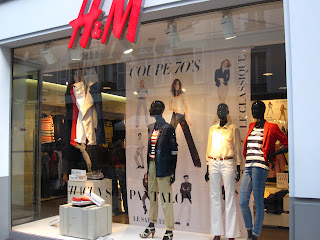by Zo-Ee Chee
“The Islamic Factor” is a chapter from the 1988 book entitled “The Fashion Conspiracy” which reveals some of the fashion industry’s most provocative secrets. The author, Nicholas Coleridge, is the Managing Director of Condé Nast (Vogue, GQ, Glamour etc.) in Britain and oversees the publishing company’s branches in Paris and Mumbai. He has also been a chairman of the PPA (the Magazine Publishers Association) and of the British Fashion Council. Needless to say, Coleridge is an authority on the inner workings of the fashion world.
Published just before the Gulf War (1991), the chapter details the importance of the Middle East as a source of income for couturiers and the relationship that the fashion industry has with clients from the Gulf as both an empowering and undermining force. As a largely informative approach, “The Islamic Factor” describes the somewhat contradictory nature of Middle Eastern taste for couture due to the heavy censorship and the desire for a modest appearance as required by Islam (supported by the censorship of Vogue magazine by The Committee for the Propagation of Virtue and the Supp
ression of Vice). Many of the richer families from the Gulf buy heavily from designer and luxury brands, preferring certain makes including Nina Ricci, the now defunct Jean-Louis Scherrer, Ungaro, Givenchy and Calvin Klein though their choice in designers seem to be relatively arbitrary. Their purchasing power is even enough to account for 11% of the fashion industry with Kuwait being at the top of the list (as of 1988). This does not take into account the mobile nature of Middle Eastern buyers who do much of their shopping abroad. The facts therefore point towards Middle Eastern buyers being more economically powerful than their initial cultural and religious contexts might indicate.

H&M campaign censored for the Middle East.
Despite their economic importance in the fashion industry, Middle Eastern buyers are often go unmentioned as clients of fashion houses and are instead considered gaudy and tasteless due to their perceived lack of prestige (and by extension, a lack of power). This seems an unfair trade-off in reputation as many couture houses in the 1980s, overwhelmed by debt (due to the recession caused by OPEC oil embargoes), specifically catered and designed for Middle Eastern customers through the use of heavy beading, fur as well as exquisite craftsmanship which was is seen as a sign of wealth. This shows that the economic power of the Gulf actually subverts the aesthetic style of fashion as couturiers designed clothes to appeal to them thus forfeiting some of their own design principals.
http://www.zuhairmurad.com/
Example of Middle Eastern taste: designer Zuhair Murad from Beirut, Lebanon
Despite the economic power that the Middle Easterners possess in the fashion industry, they are still a living contradiction with their desire for luxury goods and the demands that Muslim women should be modest in appearance (consider the to the plunging necklines and bare backs of some designer dresses). Although these clothes are often covered by a burqa, there exists a communal culture of “video-teas” where the women gather at the home of one of the women and watch videos, sans burqa. This therefore reveals the use of designer clothes as a method of impressing other women (much like the “vicarious consumers” as discussed in Thorstein Veblen’s “Conspicuous Consumption”). There is a limit to the spending, however, with husbands or male relatives imposing restrictions.

In conclusion, this text presents various aspects of the tug of war between power, money and religion. On one front, it considers the Gulf’s economic power and ability to sway the direction of fashion. On the other hand, it is simultaneously powerless because of its lack of prestige. Although the editor’s note indicates that, as of 2006, the Middle East accounts for 40% of haute couture purchases, the “Islamic Factor” also presents the interesting dialectic (though less prominently than the former point) of what is perceived as female powerlessness because of the restrictive burqa and the freedom Muslim women in the Middle East have in their ability to purchase incredibly expensive clothes to their hearts’ desires.





















































